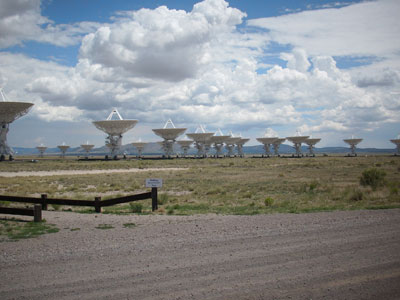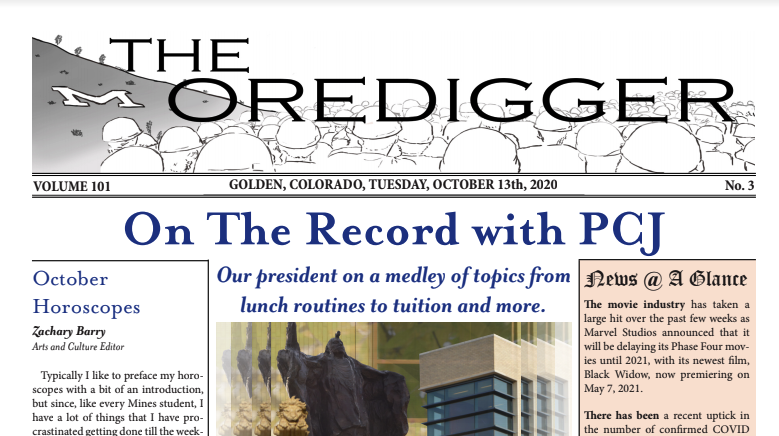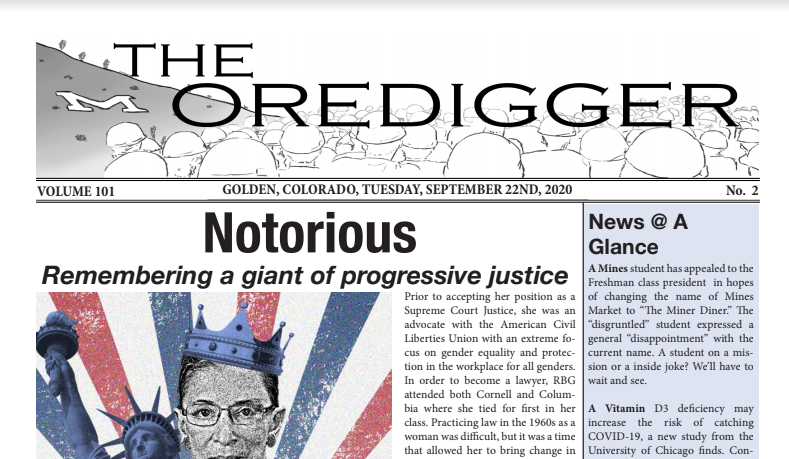Summer is coming soon to the students of the Colorado School of Mines, though that might seem unlikely through the haze of exams. Some students will take this time off, others will take classes, others will have internships, and others will graduate and move on to real jobs. Most will either have to or be able to take a longer trip during the summer than would be possible during the semester. In fact, Mines students could be considered to be scattering to the four corners of the country over the summer. With that in mind, “The Oredigger” here presents travel options in each of the four cardinal directions.
North:
To the north of lies the Buffalo Bill Historical Center, a collection of five museums in Cody, Wyoming.
The first museum is the Buffalo Bill museum (which is currently undergoing renovations and will reopen on May 19). This museum features a large collection of artifacts from the life of William F. “Buffalo Bill” Cody, emphasizing both his Wild West Show and his personal life. It is supplemented by his boyhood home, which is located in the historical center’s garden. The museum is the oldest of the five, founded in 1927.
The second museum is the Greater Yellowstone Natural History Exhibit, which covers the natural history of the Greater Yellowstone area in which Cody is located. Highlights include a thirty foot diameter mosaic map of the area and interactive exhibits that, although they are mostly aimed at children, may well interest college students as well.
The third museum is the Whitney Gallery of Western Art, which was founded in 1959 with a single statue and now is home to a wide variety of western art pieces. The Whitney Gallery also features mock-ups of famous western artists’ studios. Seasonally, the historical center also displays Joseph Henry Sharp’s (once a resident of the Crow Agency as well as an artist) cabin furnished with his actual belongings.
Fourth, the historical center has a Plains Indians museum, recounting the history and culture of these peoples. The exhibits focus on ceremonies, relationships with bison, daily life, the Tsitsistias Migration, and the themes of adversity and renewal.
The fifth and final museum is an almost overwhelmingly large museum devoted to firearms. Weapons from all eras are labeled and displayed, along with a mock-up of a gun manufacturing shop.
The whole collection of museums are well worth seeing, although the Buffalo Bill and Plains Indian museums should probably be prioritized. Cody is about an hour outside of Yellowstone, making it an ideal detour for a Yellowstone trip.
South:
Although many great tourist sites are historical in nature, some are scientific. One such site is the Very Large Array located fifty miles west of Socorro, New Mexico at an elevation of 6,970 feet. The Very Large Array is one of the world’s largest radio telescopes, composed of a collection of 27 radio antennae 25 meters in diameter arranged in a Y-shaped pattern. These radio dishes can be rearranged in configurations between 600 m and 36 km. The observatory studies a variety of different astronomy topics, ranging from black holes to planets.
Visiting the array is a bit of a trek, as it is in what can only be described as the middle of nowhere, but is well worthwhile. The visitor center is open daily from 8:30 am to sunset and offers a short video, exhibits, and a self-guided walking tour. There are also guided tours on the first Saturday of the month at 11:00 am, 1:00 pm, and 3:00 pm. The Very Large Array is an unusual site, but well worth it for fans of astronomy and those in New Mexico.
East:
Traveling east on I-70 through Kansas can be a brutally boring proposition. Finding something to break up the monotony is critical. One such something is the Prairie Museum of Art and History in Colby, Kansas, a town about fifty miles east of the Colorado-Kansas border.
The museum is, like many of its type, divided into two halves. The first is the interior museum and the second is a smattering of outbuildings. The museum itself includes displays devoted to glass, ceramics, toys, dolls, wedding dresses, and furniture amongst other things. Despite the seemingly-somewhat remote location, these collections are rather extensive.
Outside, the Prairie Museum of Art and History has an assortment of buildings. These include a 1915 Presbyterian church, a sod house, and a house and barn from the 1930s. Additionally, the museum has the Cooper Barn, which was built in 1936 and contains a 7,000 square foot exhibit on agriculture in Northwest Kansas from the 1870s – 1990s.
West:
Utah is famous for its national parks. Arches and Zion represent some of America’s defining vistas, with Canyonlands and Bryce Canyon not far behind. But, these most prominent parks are scarcely the only ones in Utah. Another notable park in Utah is Capitol Reef National Park. Capitol Reef combines both human and geological history in a spectacular fashion.
Geologically, Capitol Reef’s Waterpocket Fold is a 100 mile long monocline, which formed during the Laramide Orogeny mountain building event. Since then, the area has experienced extensive erosion, resulting in the dramatic spires, cliffs, canyons, and domes seen today. These geological formations for the setting for the parks many hiking trails, which are well worth spending an afternoon or a day on.
Historically, Capitol Reef also offers a record of human history in the region. Though Native Americans had lived in the Capitol Reef area for millennia, the most notable records come from the Fremont culture, which was present in the area from about 600-1300 A.D. It was these people who left pictographs and petroglyphs on the canyon walls. Later, Mormon settlers came to the area and established the small town of Fruita, which is remembered in the presence of the Fruita school building and the Gifford House.
As is the case with any national park, visitors should start at the visitor’s center to familiarize themselves with the park and select an itinerary. Visitors even on relatively compact schedules can see most of the park by taking the scenic driving tour and taking a short hike. Visiting the Gifford House and purchasing a pie is highly recommended; the baked goods are phenomenal.
If you go:
Buffalo Bill Historical Center
720 Sheridan Avenue
Cody, Wyoming 82414
Daily 8:00 am – 6:00 pm
Admission $14 Student with ID; $18 Adult
Very Large Array
50 miles west of Socorro on U.S. Highway 60 then South on state highway 52, then west on the VLA access road and follow the signs
Daily 8:30 am – sunset
Guided Tours first Saturday of month at 11:00 am, 1:00 pm, 3:00 pm
Admission: Free
Prairie Museum of Art and History
1905 S. Franklin,
Colby, KS 67701
Monday to Friday: 9:00 am – 5:00 pm
Saturday and Sunday: 1:00 pm – 5:00 pm
Admission: $8
Capitol Reef National Park
Visitor Center
Daily 8:00 am – 4:30 pm
Admission: Individual: $3.00 for 7 days, $5.00 for vehicle for 7 days




'Local Travel: Cardinal directions' has no comments
Be the first to comment this post!